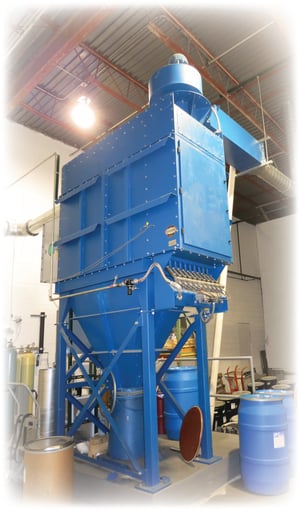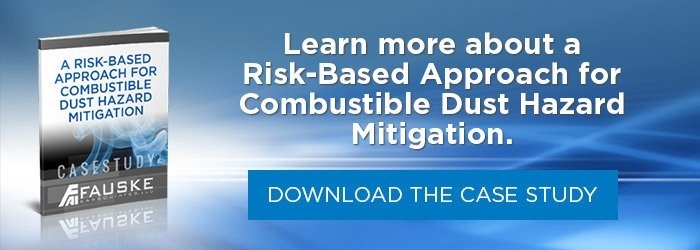Dust Explosions: Have you determined combustibility or explosibility?
Have you determined the combustibility or explosibility hazards of your material? If not, take the steps necessary to characterize your dust:
 Collect at least 500 to 1000 g or 1 1/2 to 2 lbs of sample per instructions supplied by your dust hazards testing laboratory. Once received, your lab should conduct a:
Collect at least 500 to 1000 g or 1 1/2 to 2 lbs of sample per instructions supplied by your dust hazards testing laboratory. Once received, your lab should conduct a:
- Combustible Dust Screening Test -Determines if your dust could burn in a pile and, or a
- Explosibility Screening Test or Go/No Go Screening - Determines if your dust is explosible in a cloud
If explosible, consider the following tests:
- Explosibility Severity Test (KSt and Pmax) - Used for explosion protection
- Minimum Explosible Concentration (MEC) - Used for explosion avoidance
- Minimum Ignition Energy (MIE) - Used for ignition avoidance
- Minimum Autoignition Temperature (MIT) - Avoidance from hot surfaces or hot environments
If KSt < 50
- 1m3 Challenge Test for Low KSt Results
Is the material covered by one of the exemptions in Section 1.3.3 of NFPA 652?
1) Storage or use of consumer quantities of such materials on the premises of residential or office occupancies
2) Storage or use of commercially packaged materials at residential facilities
3) Such materials displayed in original packaging in mercantile occupancies and intended for personal or household use or as building materials
4) Warehousing of sealed containers of such materials when not associated with an operation that handles or generated combustible dust 5) Such materials stored or used in farm buildings or similar occupancies for on-premises agricultural purposes
 What is the Dust Hazards Analysis (DHA)?
What is the Dust Hazards Analysis (DHA)?
NFPA requires that the process owner conduct a Dust Hazard Analysis once you realize that you have an explosible dust. A DHA will identify fire and explosion hazards and determine if there are additional tests or mitigating activities that need to be performed in order to reduce your risks.
If you still are not sure what you need or how to collect your dust for sampling, please contact Fauske & Associates at info@fauske.com, or 630-323-8750. www.fauske.com

